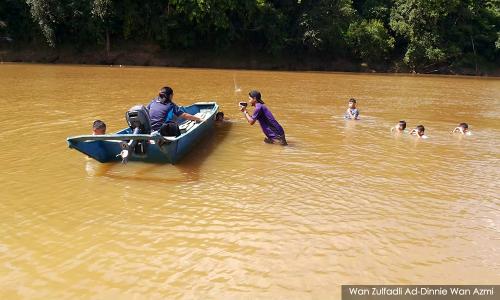How teacher Dinnie makes award-winning films in rural Sarawak
MALAYSIANSKINI | Like most auteurs, Wan Zulfadli Ad-Dinnie Wan Azmi is more comfortable behind the camera.
He obliges to an interview anyway, reeled in by the opportunity to speak about his two favourite things - teaching and a unique animation technique called rotoscoping.
Cikgu Dinnie, as his students call him, recently made headlines for "B.B. - Batuh Bijanji" - the animated short film that won "Best Film by Popular Jury" at a Brazillian film festival for student work.
His day job is as an art and physical education teacher at Sekolah Kebangsaan Temong, a rural primary school in Serian, Sarawak. After school hours, he makes films with and of his students.
Dinnie produced the award-winning film with fellow teacher Mohd Reduan Patah and along with their 11-year-old students Macgres Sawet and Nabiatul Dania Zulfiqa Mohd Zulfadhli.
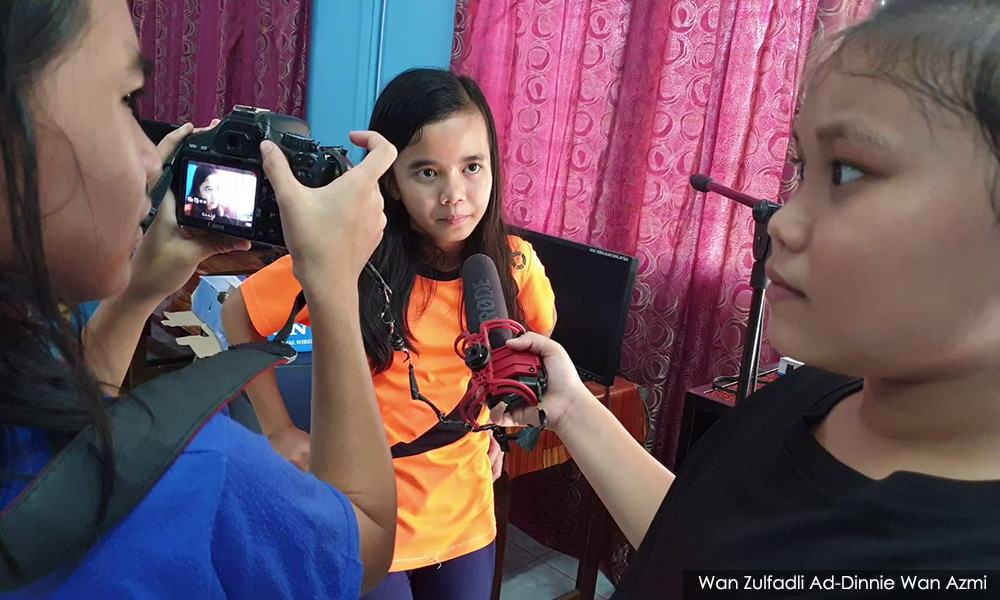
Their win struck a chord with the public, and the team has since embarked on an unplanned whirlwind promotional tour for the film.
From breakfast radio interviews to meetings with the National Film Development Corporation (Finas), Dinnie told Malaysiakini how the attention was both exciting and a little overwhelming.
Interviewed after a media appearance where Sarawak Chief Minister Abang Johari Openg announced an RM25,000 allocation to his school, the teacher admitted he was still trying to process it all.
“This was beyond our expectations,” he said.
Dinnie’s love for filmmaking, however, began long before "B.B. - Batuh Bijanji" hit YouTube.
Origin story
Born in Terengganu, but raised in picturesque Taiping, Perak, 30-year-old Dinnie was introduced to the world of motion pictures by his film buff father.
An English schoolteacher, Wan Azmi Wan Othman loved all kinds of films.
Dinnie watched those films with his father from a young age, picking up English from their dialogue and subtitles. They would also read comic books, such as Fantastic Four, together.
“At school, when we had to write down what we wanted to be when we grew up, I would always write teacher, film director and graphic designer,” he recalled fondly.
He eventually followed in the footsteps of both his parents and chose to become a teacher.
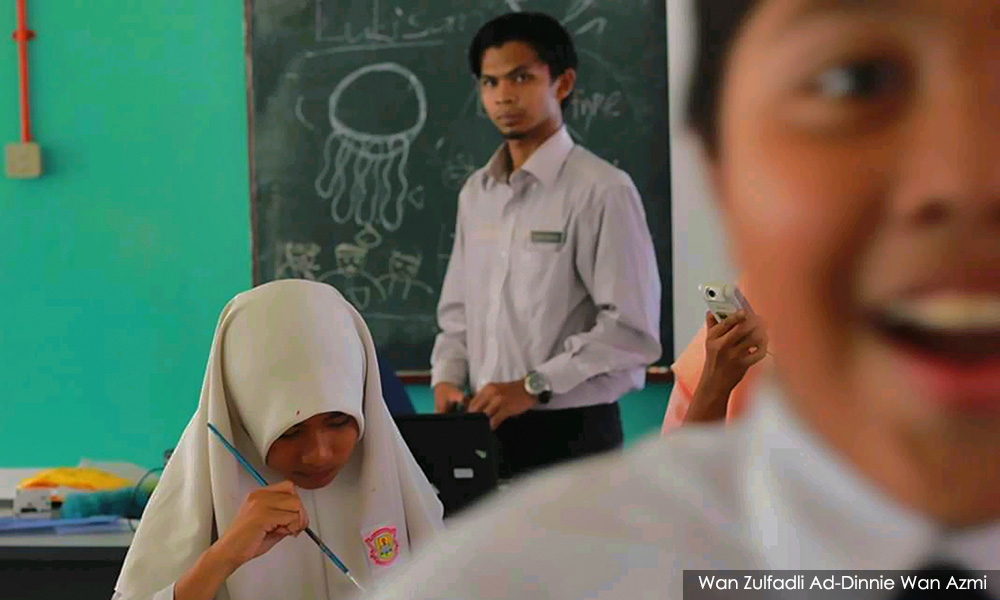
His first posting in 2014 took him deep into the Sarawak interior to Sekolah Kebangsaan Sangan Iban in Tatau town. Located on the bank of the river Sungai Anap, students would arrive by boat and head into classrooms that were lit by power generators. Tatau is about an hour’s drive from Bintulu.
In 2016, Dinnie began teaching at his current school. Sekolah Kebangsaan Temong, which is very close, about 4km, to the Malaysia-Indonesia border. The school is a two-hour drive from Kuching.
While both schools are a world away from his family home in Taiping or Kuala Lumpur, where he did his tertiary education, Dinnie said he is happily settled down in Sarawak with his wife and young son.
Student collaborators
Through the many moves he has made in his life, one thing has remained - his film projects.
The self-taught filmmaker started film production outfit D-Mulsion Production when he was 18 and, 12 years on, continues to upload completed works to its YouTube channel.
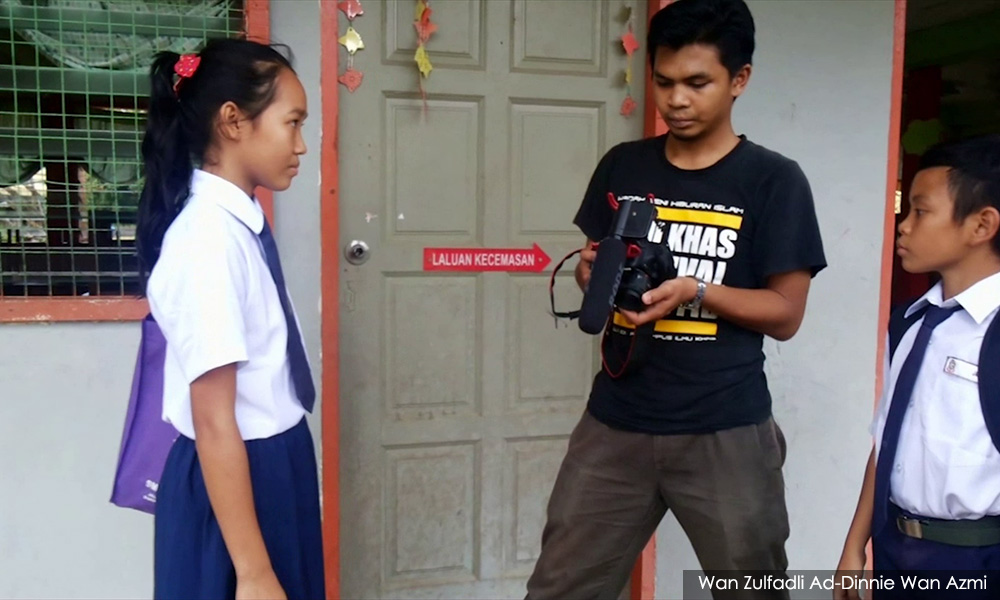
Over the past six years, his day-to-day environment has inspired him to make films about students and teachers.
Usually made for submission to school-level animation competitions, the films heavily feature his real-life students, both in front of the camera as well as behind it.
Such was his first foray into animation, "Hana", in 2017. It was largely shot at SK Temong and featured 10-year-old Angel Rinna as the titular character - a cheeky girl from an underprivileged family who studies hard for her UPSR examination.

Dinnie was assisted by Angel and fellow Year Four pupils Brandon Dylan and Revarina Munty throughout the entire filmmaking process - from storyboarding to scripting, filming and animation.
Due to his schedule, as well as that of his young cast and crew, filming and post-production had to be done after school hours.
Everything had to be done within the school compound as well, for his students did not have digital devices or internet connection at home.
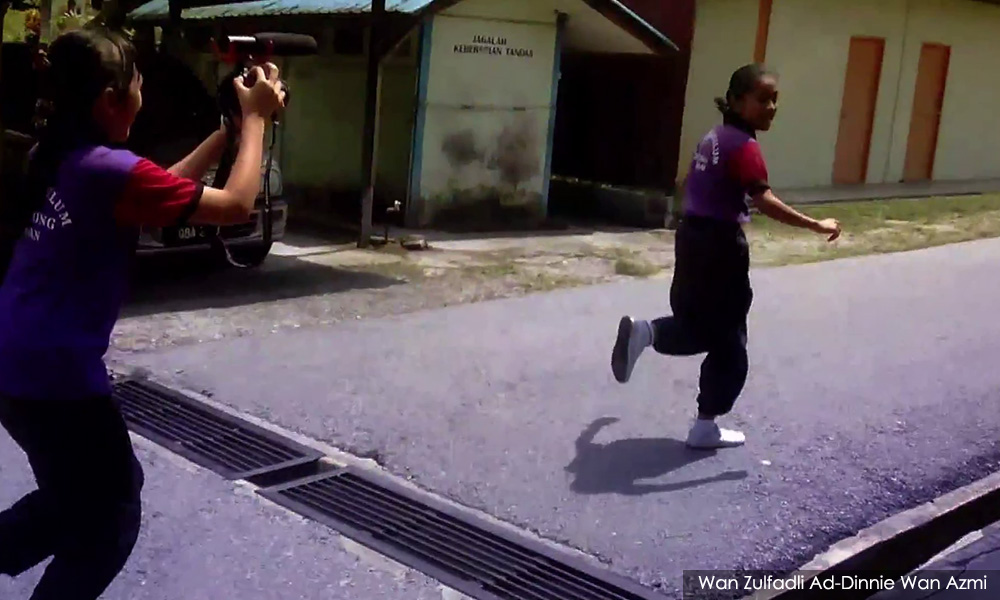
As a teacher on a shoestring budget, Dinnie explained that he used his school as the mise en scène (setting) for his films as that was what was accessible to him.
“I use whatever props and locations that are here.
“I want to prove that even without a big budget, we can make good films,” he said.
Besides featuring a school setting, another defining feature of Dinnie’s animated films is the use of the rotoscoping technique.
Time-consuming and technical, his team needs to first shoot all scenes on a handheld video camera. They then manually trace over live-action footage frame-by-frame and colour them in using software like Adobe Photoshop.
After several film projects, his students - mostly Bidayuh, whose parents are farmers - have since become “fluent” in the rotoscope technique.
“Teaching them rotoscope was difficult at first and it took a long time. But now they are used to it.
“Sometimes, people may look down on these kampung (village) children because there is no internet here.
“So teaching them rotoscope helps motivate them,” Dinnie said.
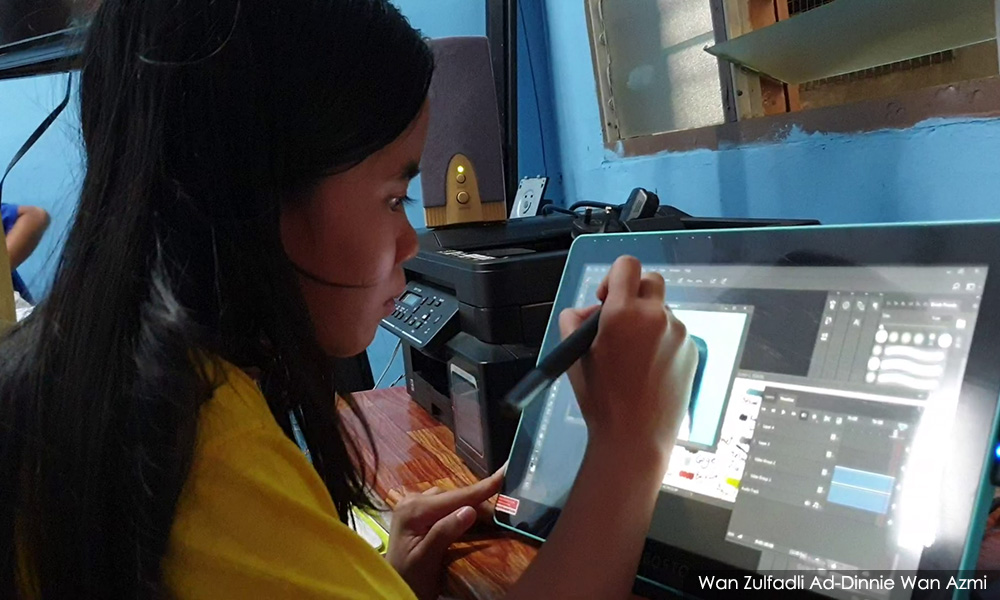
Unlike the large animation teams enjoyed by bigger productions, Dinnie needs to keep his crew small as they all take turns tracing over footage on the one laptop he owns.
He has only managed to teach about six students the rotoscope technique.
“It’s hard to teach more students when I only have one laptop,” Dinnie said.
Following the media blitz after the "B.B - Batuh Bijanji" film festival win, Serian MP Richard Riot Jaem donated two desktop computers to SK Temong. He also gave a personal laptop each to Macgres and Nabiatul.
To rotoscope with love
"B.B. - Batuh Bijanji" - which talks about the enduring friendship between two schoolgirls even as tragedy befalls one of them - is not the only film by Dinnie to have gained international recognition.
"Hana" premiered at the Busan International Kids and Youth Film Festival in South Korea in 2018.
"Cikgu Hana", a different film from "Hana", tells a whimsy tale of a teacher who takes her two students through a time machine to witness Malaya’s independence from the British. The film won the National Digital Storytelling Animation award two years ago.
Certain scenes in the film, Dinne shared, were tributes to the rotoscoped scenes in The Beatles’ 1968 animated film "Yellow Submarine".
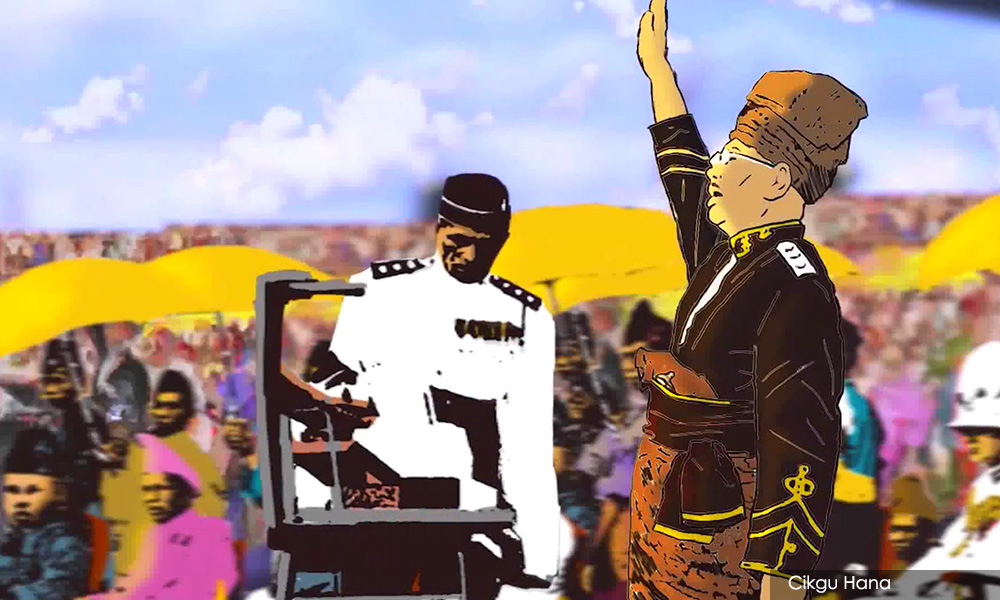
His 2019 short film "Alice" - about a student who wakes up after a dramatic fall and realises she has developed psychic powers - made it into last year’s BMW Shorties’ top 10 shortlist.
A live-action film, it is a tribute to horror film techniques of the 1970s and 1980s.
Dinnie explained that he uses his projects to simultaneously pay homage to his favourite films and genres, to experiment with rotoscoping and also to empower his students, who otherwise would have little exposure to filmmaking.
To ensure his stories are appropriate for his young cast, crew and audience, he needed to deeply involve his students in the entire filmmaking process.
“I love experimenting, especially in terms of the visual approach. To make it appropriate (we discuss things during) the brainstorming process.
“I would ask them if scenes are suitable or not,” he said.
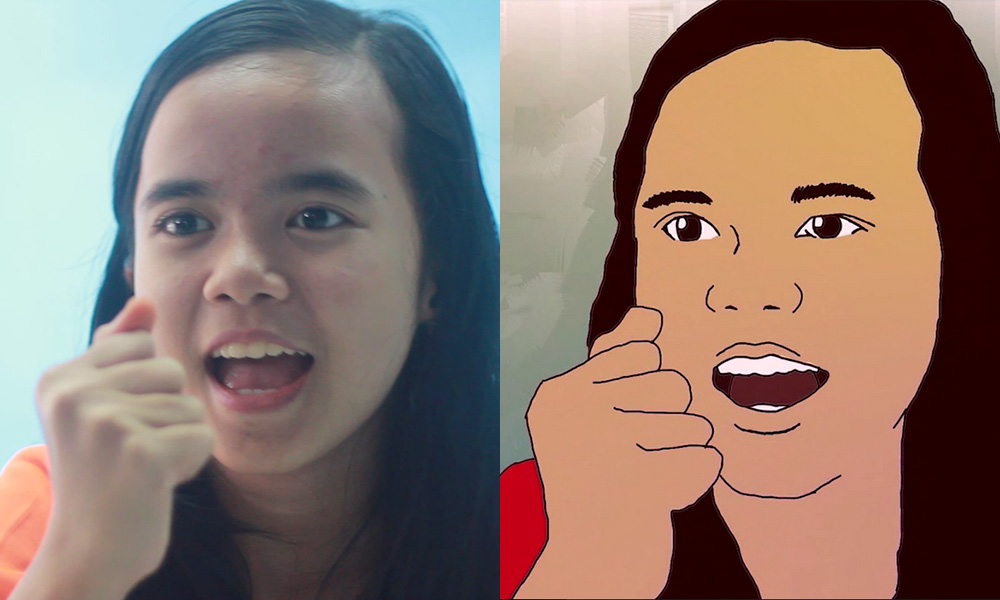
His penchant for the rotoscope visual style, meanwhile, was inspired by Richard Linklater’s critically acclaimed "Waking Life" (2001)- an animated feature for adults.
Dinnie liked that the technique gave his animations a distinctive “distorted” yet realistic and expressive quality. Though tedious, he believes rotoscoping helps set his films apart from other animated features.
“I see how everyone just follows the trends on YouTube now, and it is as if they have no identity or personal style.
“(Film director) Michael Bay is known for his explosive scenes, while Zack Snyder is known for his use of CGI. Even if people say they are bad, they have their trademark style.
“My style is I like to blur the line between reality and fiction. And I use rotoscope,” he said.
Outside his school duties, Dinnie is also part of a six-person team that runs an annual Digital Storytelling Animation (Dista) camp in Sarawak where participants learn how to make animated films.
One day, he hopes to be able to teach animation and rotoscoping to tertiary level students.
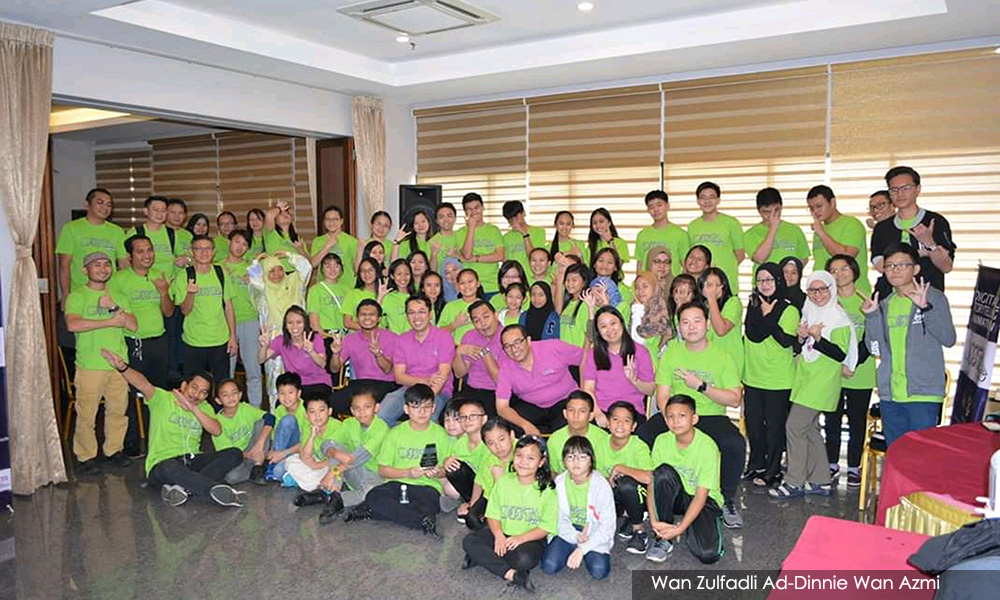
Family affair
His students are not his only collaborators.
Dinnie’s films get a lot of help from his younger brother Adam Dani - a musician based in Perak.
Most of the animated features are scored with Adam's songs - a process that mostly involves the brothers sending video and audio files to each other via WhatsApp. Adam's music can be heard in "B.B. - Batuh Bijanji", "Cikgu Hana", and "Hana".
While proud of his first international film award with "B.B. - Batuh Bijanji", Dinnie admitted that the success would have been sweeter if his father - who introduced him to films - was around to witness the win.
Wan Azmi passed away on July 10 this year.
Nevertheless, Dinnie finds solace in how his five-year-old son is beginning to show an interest in making videos and even special effects.
“He likes to make videos. He keeps making videos of magic tricks,” he said, chuckling.
MALAYSIANSKINI is a series on Malaysians you should know about.
PREVIOUSLY FEATURED
Space programme finalist Vanajah still reaching for the stars
Fighting for justice is in her blood
Bake with dignity - Empowering adults with disabilities through baking
RM12.50 / month
- Unlimited access to award-winning journalism
- Comment and share your opinions on all our articles
- Gift interesting stories to your friends
- Tax deductable
